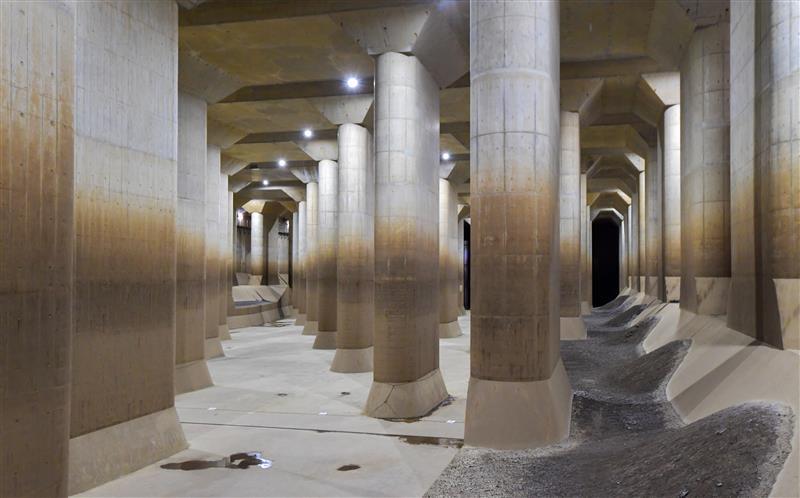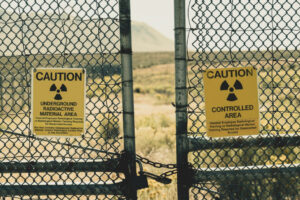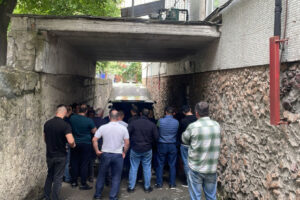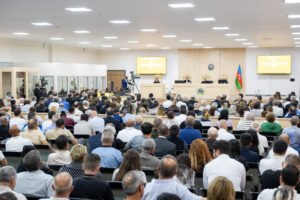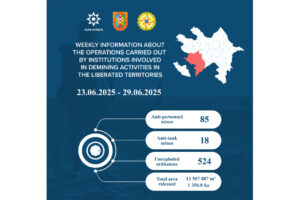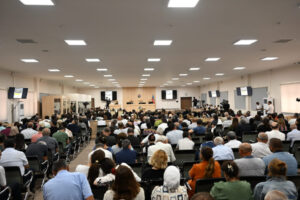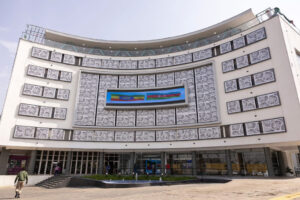Tokyo, 17 May, /AJMEDIA/
After visitors descend stairs winding 50 meters below ground, they emerge to an otherworldly sight — a cavernous, dimly lit space with towering pillars reminiscent of a temple in ancient Rome.
“The moment I stepped down the stairs and saw the entire space, I was astonished,” said Chen, a tourist who visited the location, one of the world’s largest underground stormwater discharge channels, which many have come to describe as an “underground shrine.”
The temple aesthetic comes from 59 towering pillars within the space, each measuring 7 meters long and 18 meters high. The facility north of Tokyo in Kasukabe, Saitama Prefecture, is visually reminiscent of Istanbul’s ancient underground Basilica Cistern water reservoir.
Its unique atmosphere has made it a popular location for filming and has given people like Chen from China a reason to visit.
Chen, who wished to reveal only her family name, said after touring the facility earlier this year she would recommend others make the journey, not just for the visual impact but also to see “how Japan manages its flood control system.”
Officially known as the Metropolitan Outer Area Underground Discharge Channel and located nearly 40 kilometers from Tokyo, the facility collects overflow from small and midsized rivers and drains the water to Tokyo’s Edogawa River through a 6.3-km tunnel system that also uses shafts and pumps.
“The facility has prevented more than 150 billion yen ($1.02 billion) in flood damage since full operation began in 2006,” said Yoshio Miyazaki, a land ministry official who heads the operation.
The facility was built as a “major pillar of water management” for the vulnerable Nakagawa-Ayase river basin, which accumulates water easily due to its bowl-shaped topography, Miyazaki said, adding that “rapid urbanization from 1955 and concentration of people and resources have led to more and more water disasters.”
The channel, which took 13 years to build and cost more than 230 billion yen, has a pressure-adjusting water tank and shafts large enough to fit the Statue of Liberty. It takes in water about seven times a year on average and it has never yet filled to capacity, he said.
Miyazaki, however, was quick to dispel the notion that the facility protects Tokyo entirely, saying it only directly safeguards three of Tokyo’s 23 wards and parts of nearby Saitama Prefecture.
Managing water has long been a necessity for Japan, where communities and livelihoods began to thrive after paddy farming was introduced during the Yayoi Period more than 1,700 to 2,300 years ago.
Water management began to be undertaken on a larger scale in the Edo Period (1603-1868) when Japanese warlord Tokugawa Ieyasu established the government in Edo, the metropolis now known as Tokyo.
Nobuyuki Tsuchiya, deputy director general of the Japan Riverfront Research Center, said over the years Tokyo has weathered flooding incidents such as a fatal downpour in 1910 that cut Japan’s gross domestic product by 4.3 percent, and Typhoon Kathleen in 1947.
According to government data, the flood damage caused by Typhoon Kathleen would amount to 34 trillion yen when adjusted to present-day values.
Tsuchiya, who worked for the flood-prone Edogawa Ward in Tokyo, cited, for example, a survey from a Swiss-based insurance firm in 2014 and another one in 2002 from a German reinsurance firm naming Tokyo and nearby Yokohama as among the world’s most at-risk metropolitan areas.
Over the years, the public and private sectors in Tokyo and elsewhere in the country have implemented a host of measures, from building flood control-related infrastructure, including reservoirs, dams, dikes, and superlevees, to introducing water-resilient housing and educating residents about disaster preparedness.
In Kita Ward, the old red Iwabuchi sluice gate is a reminder of past efforts by Tokyo to help prevent flooding of the Sumida River, while a new blue version has replaced it. Discharge channels, though differing in design to the Kasukabe cistern, also exist in Osaka Prefecture and other areas.
But in recent years, Tokyo increasingly faces risks posed by climate change, Tsuchiya said, pointing to the challenges of the sudden, heavy downpours, known in Japan as “guerrilla rain.”
Data from the Japan Meteorological Agency showed that the average annual heavy rainfall measuring 50 millimeters per hour or more for the 10 years from 2015 to 2024 has increased by about 1.5 times as compared to the decade starting in 1976, the first decade for which data is available.
While the agency says the metropolitan area can withstand rainfall rates of 50 mm per hour, Tsuchiya pointed out that the hourly precipitation level in Japan, hit by typhoons seasonally, now sometimes reaches up to 100 mm.
Most recently, Typhoon Hagibis wreaked havoc on seven prefectures and disrupted the Rugby World Cup in 2019, although Tokyo escaped its wrath.
A key flood-regulating mechanism closer to central Tokyo is the Kanda River Ring Road No. 7 Underground Regulating Reservoir facility.
The 4.5-km-long tunnel is being expanded to link channels for overflow from Shirako and Kanda rivers and carry floodwaters into Tokyo Bay by fiscal 2027.
The Tokyo metropolitan government has drawn up a roadmap to make the capital, home to around 14 million people, resilient to various major risks — storms and floods, earthquakes, volcanic eruptions, pandemics, and power shortages, as well as communications failure.
While Kasukabe’s hidden water infrastructure continues to do the job of keeping Tokyo and its vicinity from being inundated, disaster management experts say the facility alone is not enough for sustainable river management.
Tsuchiya stressed the need to balance disaster management with future-focused measures, such as encouraging real estate operators to build raised houses, and cited the “room for river” concept introduced in Europe.
“Flooding does not happen just anywhere. It always occurs at the same places, so we can prepare for it,” Tsuchiya said, labeling water disasters as largely “man-made.”
“Water management is not only about managing water at one time but it is about how to take care of water so that 100 years or more from now, we can have a prosperous future,” he said.

